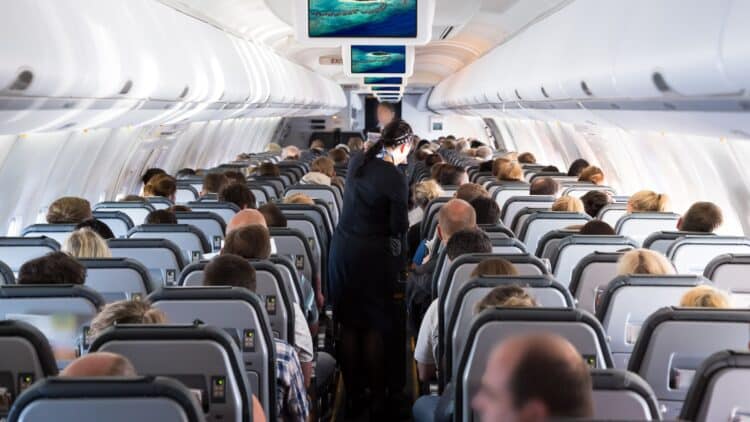You’ve just had a long flight and, when you get off the plane, you feel as stiff as a board. Who hasn’t experienced this? To combat this unpleasant sensation, physical therapists recommend adding a somewhat random item to your list of things to pack in your carry-on bag. Many people take a pillow, an eye mask, and a tennis ball. But how can this object help us feel more comfortable during all those hours of flying?
The Risks of “Immobile Traveler Syndrome”
Believe it or not, a simple one-dollar item can help us combat complex problems such as muscle pain and poor circulation while sitting on a plane. This tennis ball will not serve as a self-massage tool. Within the ultra-limited space of our seat, a small ball helps us combat immobility in the cabin.
Immobile travel syndrome can end up being very dangerous: being immobile for many hours causes blood to pool, especially in the extremities. This puts us at risk of deep vein thrombosis. If we combine immobility with low cabin pressure, the risk of clots increases. This is why all doctors emphasize the importance of trying to move around during a flight; immobility is the main factor in this syndrome.
Airplane seats don’t help. They are not ergonomic at all, and sitting in a fixed, hunched position for hours causes tension in the neck, shoulders, and lower back. Apart from circulatory problems, a long flight ends up causing stiffness and generalized muscle pain.
The solution: a tennis ball
A simple ball can serve as a mini foam roller for acupressure. According to the principle of myofascial release, pressure is applied to muscle knots by rolling the ball. This pressure helps increase blood flow in the area, relieves tension, and prevents stiffness.
We can use the tennis ball in many ways: if we want to massage our back, we will place it between ourselves and the seat. To do this, we can move subtly from side to side; remember, you are on a plane with other people, so don’t make any ridiculous movements. If you want to move your legs, which is key to improving circulation during your flight, you can take off your shoes and place the arch of your foot on the ball. This is an excellent exercise for swelling and circulation in the lower extremities while you are on the plane.
Beyond the Ball
There are many things you can do to ensure that a 12-hour flight doesn’t take a toll on your health. Experts recommend drinking 1 liter of water for every four hours of flight time. After all, the cabin of an airplane has a very low humidity level, so we dehydrate faster than usual. Avoid diuretics such as alcohol and caffeine, which dehydrate us and make us more tired.
To combat dryness in the environment, you can use moisturizers, lip balms, and artificial tears to lubricate your eyes. If you usually wear contact lenses, we suggest you wear glasses while you are on the flight.
Do exercises with a tennis ball. Experts strongly recommend that passengers get up and walk down the aisle every two hours. Try to take advantage of going to the bathroom to take a long walk, so as to disturb the passengers in the aisle as little as possible, if you have a window seat, for example.
Another premium tip from frequent flyers is to wear graduated compression stockings. They are an effective measure to reduce swelling and the risk of blood clots. Apart from that, you can do essential movements such as ankle circles and flexing your toes and heels as if pumping. We hope these tips will help you on your next flight.

